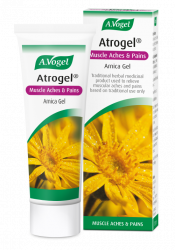When should you stretch when running?
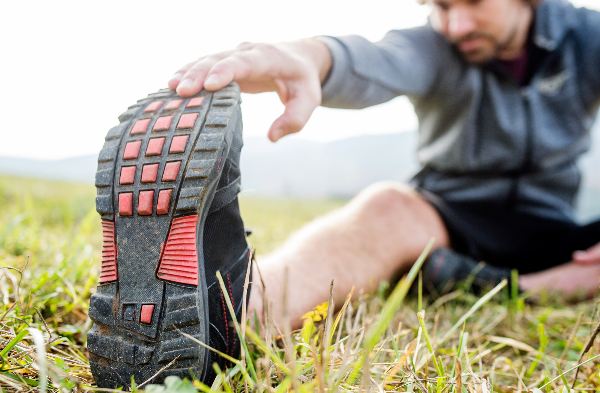
You’re probably familiar with that stiff, achy feeling that can follow a run. The muscles in your legs feel as though they’re seizing up and sometimes they can even start to cramp! Most runners try to dismiss any post-run aches and pains, with some even viewing pain as gain.
I disagree with this attitude. Yes your muscles will naturally be a bit sore and tender after running – after all, running does shorten your muscles and make them tense. Nevertheless, pain is nothing to celebrate and it can be prevented if you stretch properly before and after a run.
Stretching can help to increase the flexibility of your muscles and ease any stiffness, preventing them from becoming tight and stiff. However, the types of stretches you perform should vary. Recent studies suggest that performing static stretches before a run may do more harm than good so instead try to focus on dynamic stretches during your warm up and save the static stretches for your cool down.
What muscles should I be stretching?
Knowing what muscles to focus on is crucial. Often minor muscles such as your hip flexors and calves end up being ignored during your cool down stretches, resulting in stiffness and hip pain that can continue to plague your future runs.
Personally, I would recommend paying attention to the main five muscle groups – your hamstrings, glutes, quadriceps, calves and last but not least, your hip flexors. These muscle groups are normally the most affected after a run and, if you don’t stretch them properly, you will definitely start to feel the repercussions!
Quadriceps
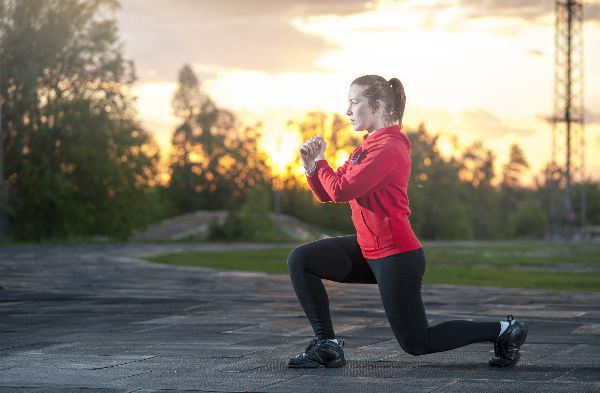
If you’ve been running up hills or trekking across uneven ground, it’s essential that you give some attention to your quadriceps. These muscles are located at the front of your thigh and stretch down from the thighbone (femur) all the way to the shinbone (tibia).
You need your quads to get you up and down inclines, so keeping these muscles strong and healthy is critical if you want to build up your strength as a runner.
Warm up – Walking lunges: If you’re familiar with lunges, this exercise should ring a bell. Not only are you engaging your quads in this stretch, you’re also involving your glutes and hamstrings!
Start by standing upright with your feet together. Take a step forward with your right leg, lowering your hips to the floor by bending both knees at a 90 degree angle. Your left knee should be not-quite-touching the floor, while your right foot should be flat.
Now you have completed the lunge, press your right foot into the floor and use your left foot to push off. This should give you some momentum, carrying you into the next lunge. Depending on your fitness levels, I’d recommend doing somewhere between 5-10 reps. If you are struggling, make sure you check out the video above!
Cool down - Standing quadriceps stretch: An old one but a good one, the chances are that you’ve encountered this exercise before.
Simply stand upright and lift your right foot, bending at the knee with your hand supporting your heel. Pull until you can feel the stretch in front of your thigh. Hold it there for several seconds and then switch to your other leg. You can try holding on to a wall if you’re feeling a bit wobbly! Try to repeat this one about 5 times, holding each stretch for 20 seconds.
Hamstrings
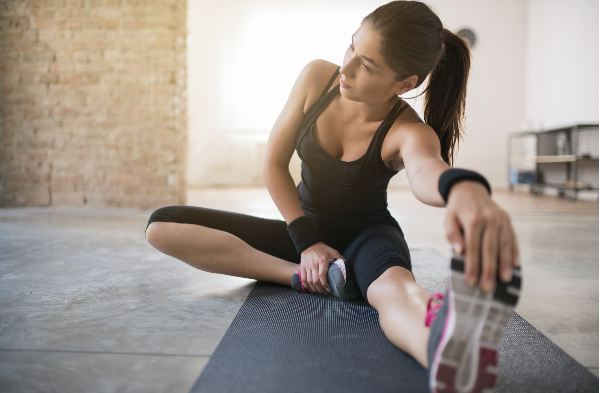
Attached to your pelvis and running down the back of your thigh, your hamstring muscles are important for bending your knees and moving your hips backwards. They are susceptible to strain, either through vigorous exercise or over-stretching, so it’s essential you warm up properly and then gently stretch them after running to prevent any injury.
Warm up – Toe touch: Start by standing upright with your back straight and your feet shoulder-width apart. Kick your right leg as high as you can, touching your toe with your left hand. Again, be mindful of your abilities and don’t immediately go for a high kick! Lower your leg and repeat with your opposite side. This should help to stretch your hamstring, in preparation of running. If you are struggling, make sure you check out the video above!
Cool down – Seated hamstring stretch: Sit down on the ground with your right leg stretched out in front of you, toes pointed towards your body. Tuck your left leg out of the way and bend forward from your hips until you can feel the stretch under your thigh. Try to hold this stretch for between 20-30 seconds and repeat with your other leg.
Glutes
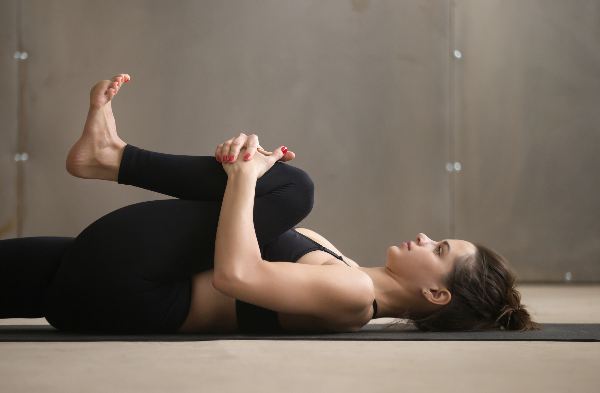
Your gluteal muscles are located around the back of your pelvis, helping to form your buttocks. You rely on your glutes for all of your foundational movements – your glutes can help you to run faster and jump higher, but if they are weak you may struggle with aspects of balancing and changing direction and you will not be able to run as efficiently.
Warm up – Lying leg crossover: This dynamic stretch is good for your hip abductors, consisting of your gluteus medius and gluteus minimus. The stretch starts with you lying flat on the floor, raising your right leg above your waist. Your knee should be extended. Lower your right leg over your left leg as far as possible before returning to the starting position and repeating with your left leg. It’s important to remember that your shoulder blades should not move from the floor! If you are struggling, check out the above video!
Cool down – Lying stretch: A nice and easy stretch to finish your run with, you should start by lying flat on your back. Keep your head and shoulders on the floor and hands by your side. Gently bend your right leg and pull your knee towards your chest. Hold in this position for about 20 seconds. Release your right leg and then alternate to the other side.
Hip flexor
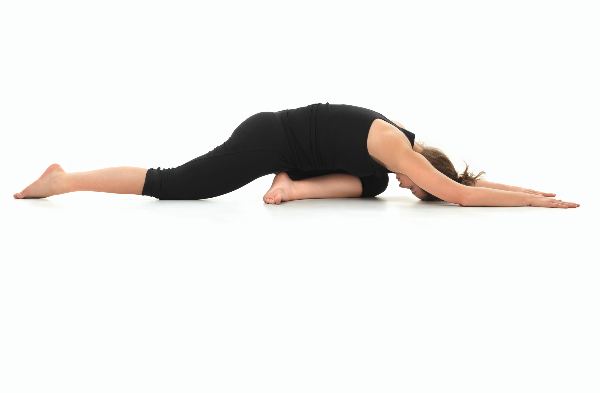
Your hip flexor muscles are absolutely pivotal when it comes to any movement in your body, including walking and running! However, often these muscles are overlooked when it comes to exercising and stretching which usually leads to bad cases of hip pain and pulled muscles.
If you want to learn more about some handy exercises to strengthen your hip muscles then please check out my blog on 6 exercises to strengthen your hip muscles.
Warm up – Half kneeling adductor hip hinge: Start in a half-kneeling position, with your hands clenched in the middle of your body. Straighten out your right leg, placing it in a lateral direction to the rest of your body. Your knees should now be in line with one another. Drop your buttocks to your heel, bringing your arms out straight in front of you. Repeat this movement between 5-10 times, changing legs at regular intervals. If you are struggling, make sure you check out the video above!
Cool down – Pigeon stretch: Start by sitting on the floor with your right knee bent and your left leg extended out behind you. Pull your right knee towards your left hip and allow your torso to rest over your right knee. Hold this position for between 5-10 seconds and then repeat with your left knee. This should help to relieve any cramping or stiffness.1
1https://www.popsugar.co.uk/fitness/photo-gallery/37481533/image/37481531/Pigeon?utm_medium=redirect&utm_campaign=US:GB&utm_source=www.google.co.uk
Calves
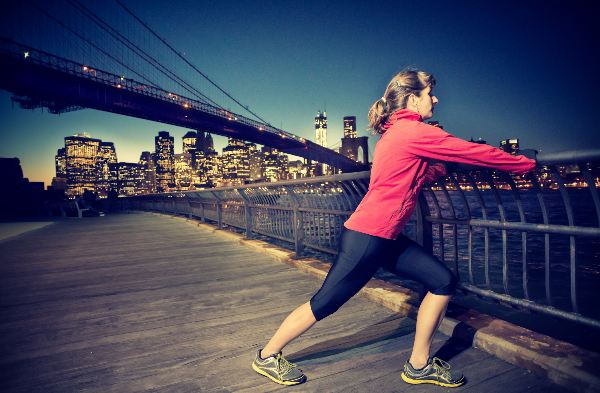
Your calf refers to a group of muscles in your lower legs which are invaluable for walking and running, helping to stabilise your feet and generate power.
Similarly to your hip flexors though, your calf muscles are often overlooked and, according to a poll conducted by Runner’s World, a pulled calf muscle is the second most common injury for runners.2
Stretching these muscles properly can go a long way towards preventing injury and if your calf muscles are strong, it can increase the efficiency of your run!
Warm up – Toe swipe: Simple and easy to perform, first you must assume a standing position. Place your left leg forward slightly, keeping it straight with your heel placed firmly on the ground. Your toes should be pointing upwards and you should start to feel the stretch. Walk forwards and switch to your right leg, repeating the action. If you are struggling, make sure you check out the video above!
Cool down – Standing calf stretch: Make sure you are standing around 3 feet from the wall before starting this stretch. Begin by placing your hands on the wall, raised slightly above your chest. Then bend your left knee and place your right foot out behind you, keeping your toes facing forward and your heels on the ground. Rotate your toes in and out and hold this stretch for 30 seconds before alternating.
2http://livehealthy.chron.com/benefits-strengthening-calves-1929.html
What else can I do?
Although I would recommend performing each of these stretches before and after every run, I can appreciate that sometimes, putting aside that kind of time can be difficult. That’s why I would recommend taking up yoga when you are not running. Not only is yoga brilliant for promoting relaxation and balance, it’s also great for helping to stretch your muscles, 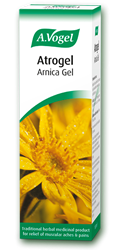 relieving any tension and increasing your flexibility!
relieving any tension and increasing your flexibility!
However, if you do notice that you are still suffering from muscle pain after a run, you could try our Atrogel Arnica Gel. Prepared using extracts of freshly harvested arnica flowers, this gel is very soothing for sore, aching muscles and joints and can help to ease stiffness. It shouldn’t affect any pre-existing medication that you may be taking and can even be used by children!







